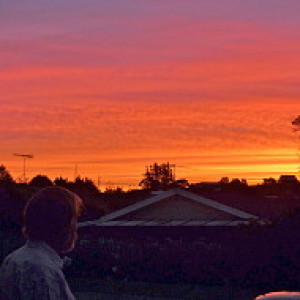Not the order I would choose
This sign tucked into a tangle of undergrowth has seemed not quite right. The biggest single contributor to Auckland's water supply is the Waitakere range. It gets more rain than the rest of the city, as the prevailing wind drives rain clouds into and over the range, resulting in more rain falling on the western side.
The water has to be treated to ensure it is safe, and it then also needs to be pumped to storage facilities scattered around the city. The treatment station is almost 100 years old, and replacement is necessary (we are told and I have no reason to doubt that).Perforce, there will be removal of some trees.
If I were writing a sign such as this to make a point of which the planners at Watercare are probably well aware, I would place trees first. The trees create an environment that supports other life such as the birds, the insects, the frogs, the smaller plants that grow in the shade of the mighty Kauri, Rimu and Totara. And also some imported wild life such as rats and mice, and even Australian possums.
Humans came late to this place. And when they first arrived they felled trees for their use, as trees growing tall offer little but shelter. In the late 19th century almost all the big Kauri and Rimu were felled and provided timber for houses. The younger rickers were sold to the English Navy as masts. By the early 20th century the only big trees left were in out of the way places, or (perhaps like the one on our own property) so twisted and branching that they were not useful. Except to other plants and the birds, of course.
People wanting to live in amongst the trees, as do we, have the least justification for doing so. Clearing of trees, small and big, is almost always necessary when a home is built amongst the trees. I'm glad that we can do so, but our claim on non interference is much less than that of the trees themselves, and the birds that they succour.

Comments
Sign in or get an account to comment.


